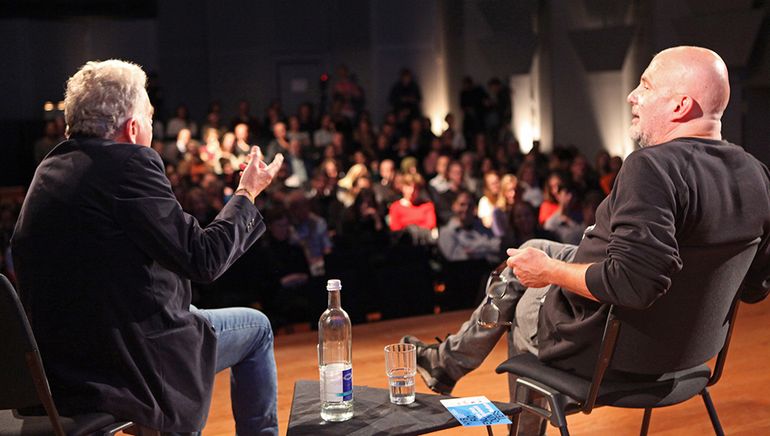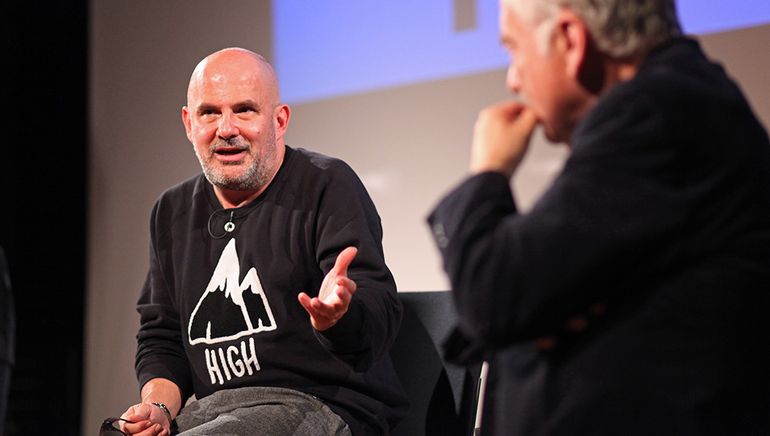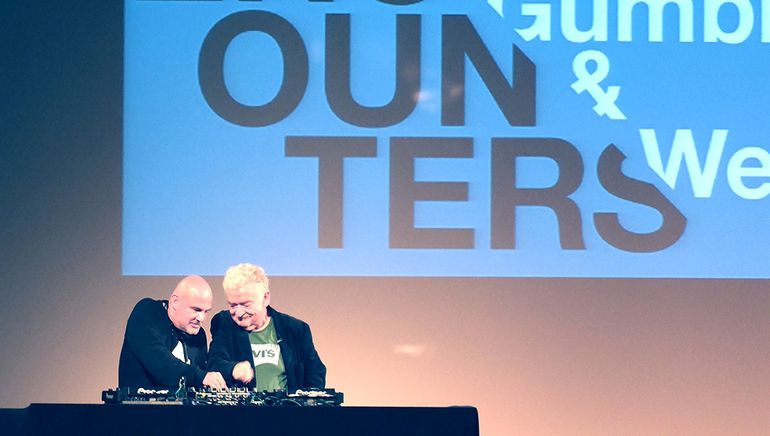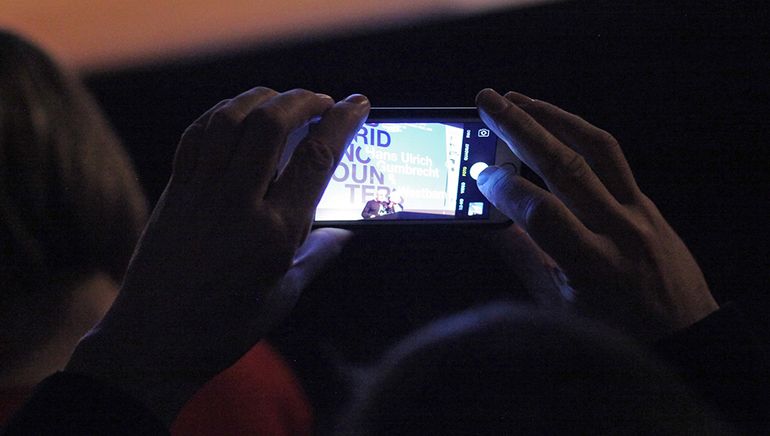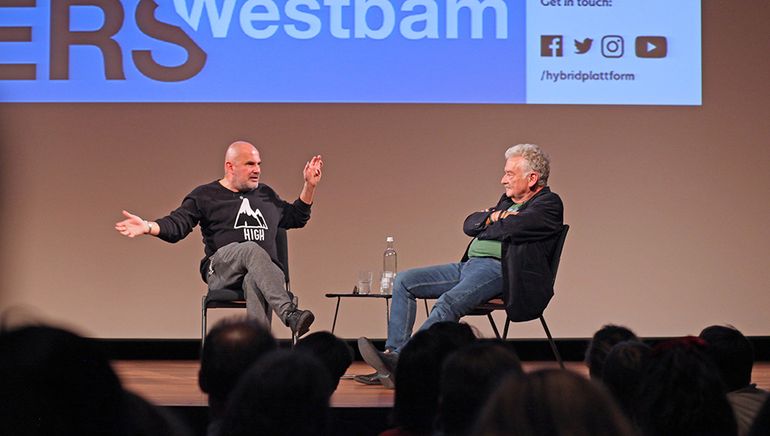For the third edition of the Hybrid Encounters Hans-Ulrich Gumbrecht, theorist and professor for literary studies, and Maximilian Lenz aka Westbam, DJ and techno pioneer, sat down together to talk about “Moods/Vibes” or more so about “Stimmung”- the term that Gumbrecht mainly uses. After a welcoming adress by the hosts of the evening namely Hybrid Plattform, represented by Ewelina Dobrzalski, and Schering Foundation, represented by Christina Landbrecht, the event kicked off with a performance by Westbam mixing beats behind a DJ-desk on stage. The audience, although keeping seated in the well-filled Georg-Neumann-Saal, were visibly moved by the rhythms. So was Gumbrecht who stood up, mimicking some timid dance moves, and finally joining Westbam at the turntable and playing some beats himself.
This performance kept being a welcome entry point to a lot of questions that were discussed in the further: How is the DJ influencing the crowd? What contribution comes from the people on the dance floor in creating “Stimmung”? Then tilting more towards Gumbrechts métier, asking the hypothetical question of what kind of DJ-performance Nietzsche would deliver on a stage like this. Which was then again taken as a template to discuss preferences in literature and favorite authors in general. Switching between different aspects and discussing divergent nuances of “Stimmung” kept being a prominent motif of the evening: Trump, the preference for certain beats as indicator for sexual preference or parental career choices – no topic seemed to odd or off. Except talking about Gumbrechts works, which was prominently refrained from. Maybe to prevent the evening from taking on too much of an academic character?
One could say the two were performing what are the underlying mechanisms and paradigms of creating/palpating/scrutinizing “Stimmung”: Synchronizing and De-synchronizing- also referred to and made explicit with terms stemming from the field of literature and dance music such as rhythm and beat (“broken up” and “straight”), division and unison.
To what end, one might ask? During the round of questions by the audience a hint was given, when a reference was made to Gumbrechts works and the question of production of presence. For a moment Gumbrecht seemed willing to introduce Westbam into his topic of research, then quickly changing the subject, performing once again what “Stimmung” that evening is all about: being in sync with everyone else. Or stated with the motto for the evening, coined by Westbam: Complete Consensus!
After the discussion, the event was not over yet; drinks were served in the recently renovated Berlin Open Lab in the opposite UdK- building. Here, too, the motto of the evening could sufficiently be emphasized and was made performative.
___
Elias

